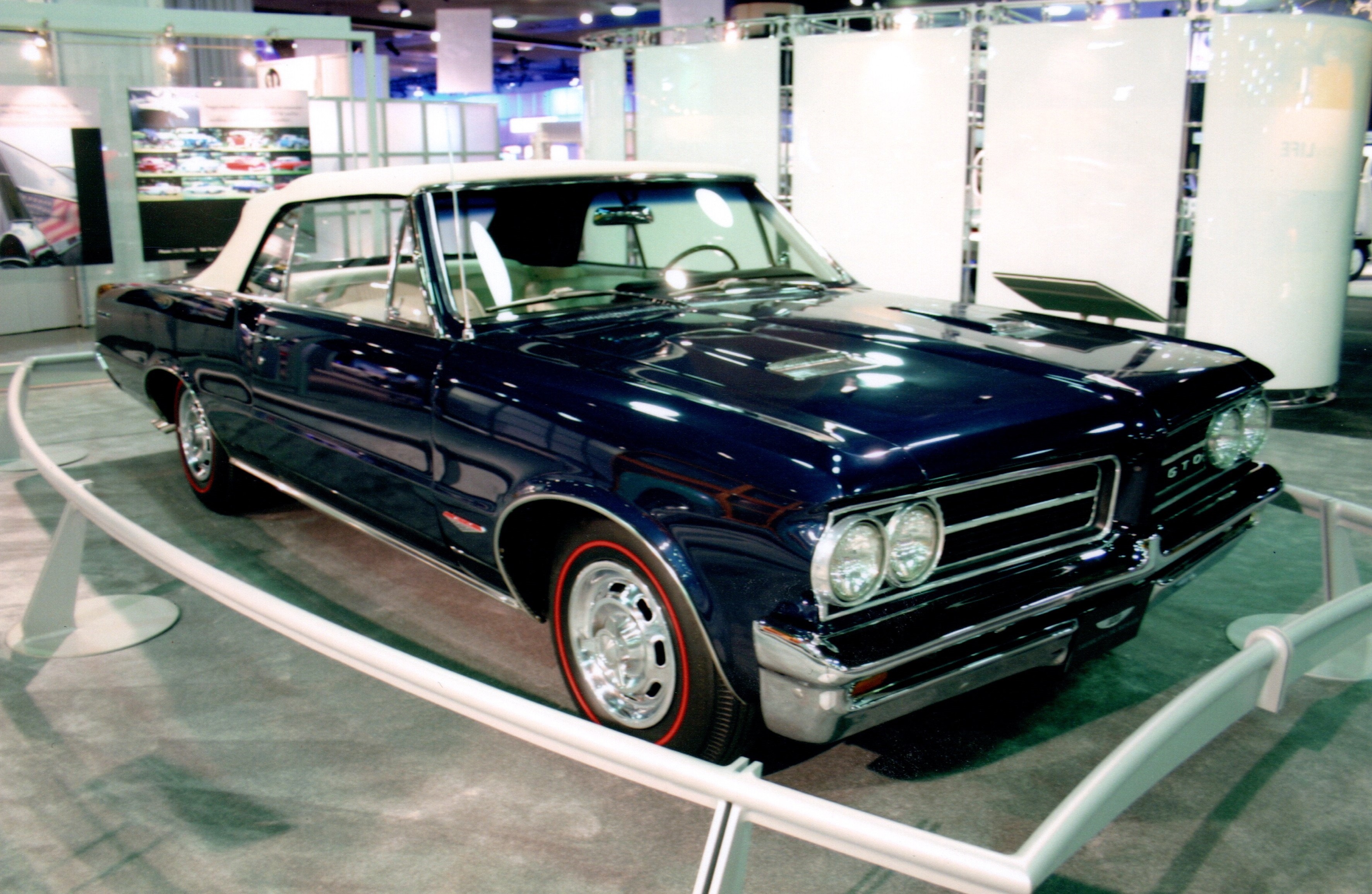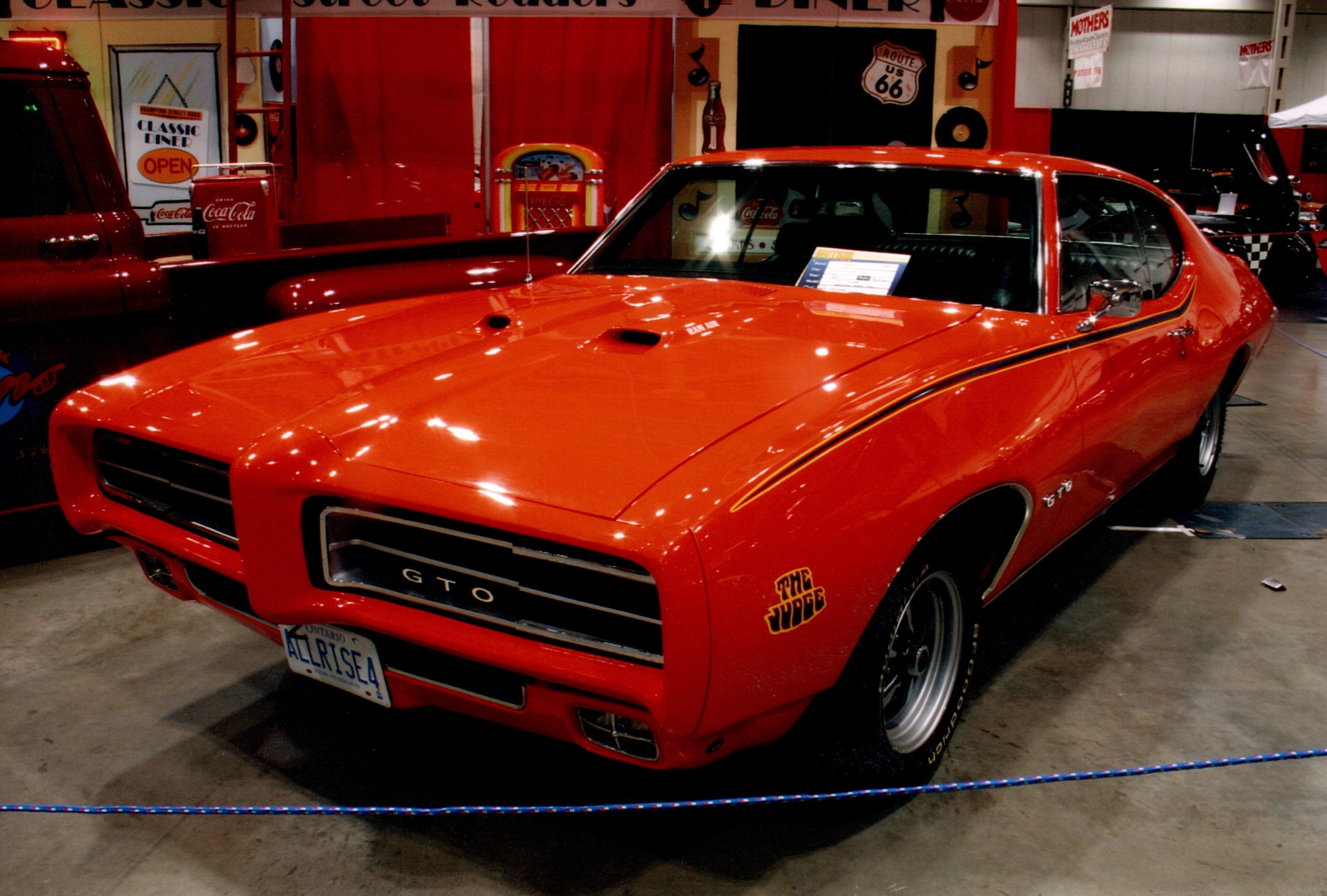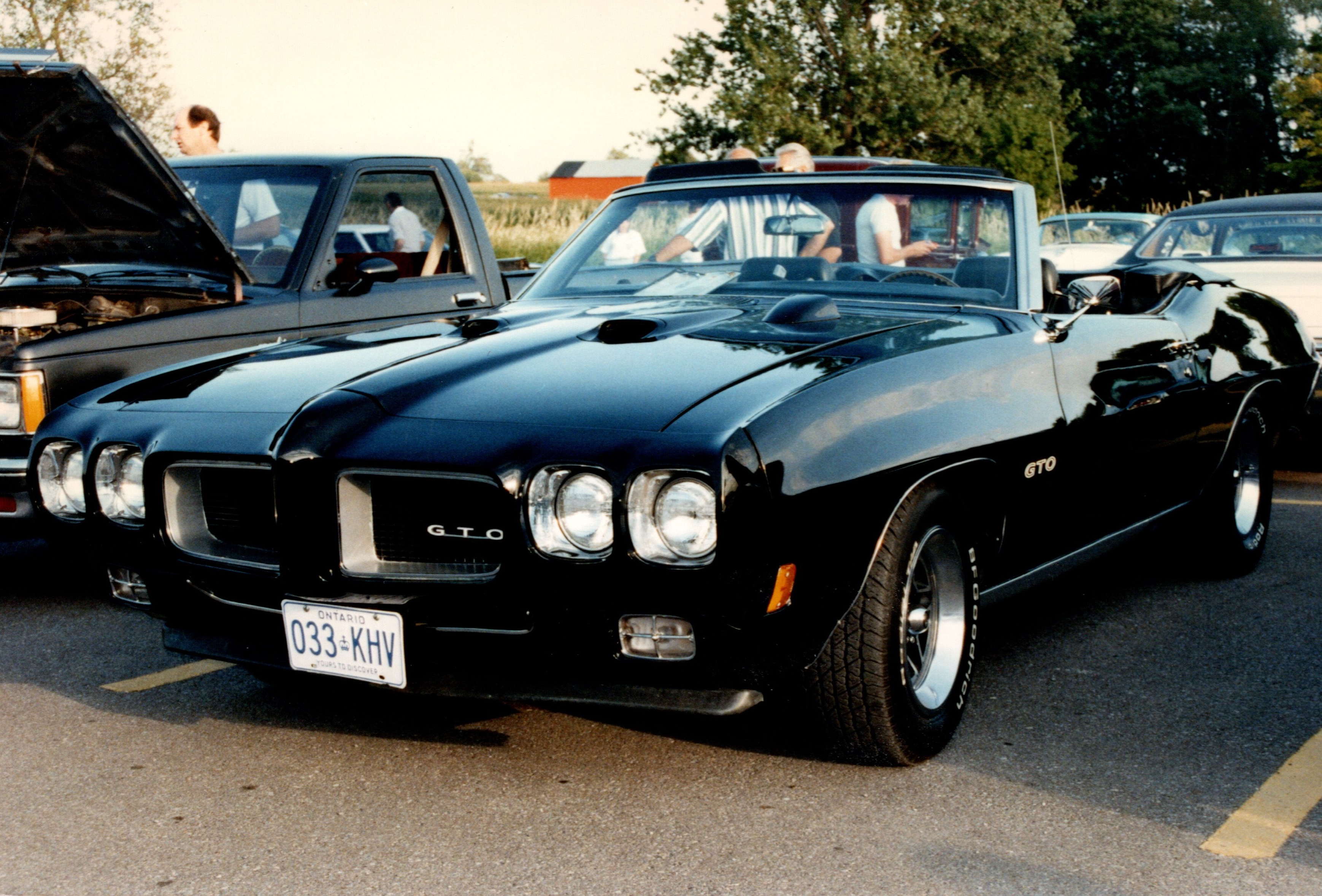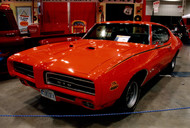Classic Car History: Pontiac GTO
Posted by Jil McIntosh on Sep 17th 2020
Sometimes rules are meant to be broken, and it was a broken rule that gave us one of Pontiac’s most famous creations, the GTO. It stood for Gran Turismo Omologato, but its many fans know it as “the Goat.”
From the 1940s into the early 1950s, Pontiac was becoming a stodgy brand. GM set out to revitalize it in 1956 and put Bunkie Knudsen in charge. He’s the guy who famously said, “You can sell a young man’s car to an old man, but you’ll never sell an old man’s car to a young man.”
One of the first things he did was remove the chrome strips on the hood, a Pontiac signature known as the “silver streak.” They dated from 1935 after a designer added them and they impressed GM’s executive vice-president William Knudsen – Bunkie’s father.
The 1959 models were under development, but Knudsen didn’t like the big bodies on a narrow chassis. He had the wheels moved out, which famously became known as “Wide Track.”
Most importantly for GTO fans, Knudsen brought two new engineers into Pontiac: Pete Estes and John DeLorean.
American automakers had started to offer compact models, and for 1961, Pontiac had the Tempest. Its unusual engineering included a slant-four engine created from a V-8 cut in half; a rear transaxle based on the Corvair’s unit; and a flexible “rope” driveshaft. It had its issues, and for 1964, was redesigned into an intermediate-sized model with a conventional drivetrain.

But by 1963, Knudsen had moved to Chevrolet. Pete Estes became Pontiac’s general manager, and DeLorean was now its chief engineer. And race driver Jim Wangers, who’d won the NHRA Stock Eliminator title in 1960 with a Catalina, worked for the ad agency that held Pontiac’s account. Something had to happen.
And it did. Wangers told DeLorean the 1964 ad campaign needed some excitement. DeLorean had his team take the redesigned Tempest and drop in a 389-cubic-inch V-8 that made 348 horsepower – 68 more ponies than the production car’s largest 326-cubic-inch eight-cylinder. The secret project was finished a month after the new 1964 lineup was announced.
They took it to Estes, who loved the idea, but there was a problem. GM had a rule that horsepower was limited by the car’s weight, and this beefed-up Tempest went above it.
DeLorean loved performance cars and hated rules, and so he came up with a plan. GM’s management went over production cars with a fine-toothed comb but paid little attention to available add-ons. So DeLorean combined the engine with hood scoops and bucket seats, called it the GTO package, and buried it deep in the options list.
He then took the car to several key dealers, let them drive it, and told them how to order it. GM’s managers were furious when they found out until DeLorean showed them a large stack of orders for it. Unable to argue with success, the top brass authorized Pontiac to build 5,000 cars. But that wasn’t even close, and after the limit was raised, 32,450 people bought a GTO that first year – and that would have been higher if the company had been able to crank out more.
For a factory muscle car, it wasn’t all that expensive. It was an option on the Tempest LeMans, which ranged from $2,491 to $2,796, and the GTO package added between $285 and $407. Car and Driver called “a bargain.” The 1964 Corvette started at $4,037, and its 327-cubic-inch V-8 made 250 horsepower to the GTO’s 348 horses.
The frame was strengthened for 1965 to reduce flex, which also added about 300 pounds, but that didn’t seem to matter to that year’s 75,000-plus buyers. For 1966, the GTO became its own series rather than an option package and came within a hair of selling 97,000 copies.
Over its ten-year lifespan, the GTO generally stayed true to its heritage. For 1967 it got a 400-cubic-inch V-8 and optional front disc brakes. The 1968 model was a complete redesign and shorter than the previous year’s car, and its integrated front fascia – in place of a chrome bumper – was an industry first.
A high-performance edition, The Judge, arrived for 1969, making up to 370 horsepower and getting from zero to 60 mph in 6.2 seconds, and the quarter-mile in 14.5 seconds.

But as the 1970s dawned, life was getting tougher for muscle cars. The segment was a busy one, and the GTO even competed within its own brand against the Firebird. Insurance was expensive, safety and emissions regulations were coming in, and record-high gas prices were just around the corner.
The Judge and GTO convertible disappeared after 1971, and in 1972, the GTO went back to an option package, available on the LeMans. In 1974, its final year, it was an option on the compact Ventura coupe, and only 7,058 were sold. The name reappeared in the U.S. in 2004, as a version of Australia’s Holden Monaro. But it only lasted three model years before the Monaro was discontinued, and when GM finally killed off Pontiac altogether, the GTO was gone for good.
Here are some other interesting tidbits about the GTO…
- The 1964 GTO was the best-ever first-year sales winner for Pontiac overall, and it lifted Tempest’s overall sales by 76.4% over the previous year.
- Musician John Wilkin approached Pontiac with a car song he’d written. He was referred to its ad agency, where Jim Wangers suggested including the new muscle car in the lyrics. “Little GTO” was released by Ronny and the Daytonas – which was Wilkin singing alongside studio musicians – and sold more than 1.2 million copies.
- Fans called it the Goat, but Pontiac management wouldn’t, thinking it was disrespectful. The nickname never appeared in any Pontiac advertising.
- John DeLorean named The Judge for a pop culture reference. A comedy show called “Laugh-In” was the highest-rated TV program in the U.S. at the time, and one of its many popular phrases was “Here comes the judge.” It was never used in the car’s advertising; it was from a song, and its creator wanted too much to license it.

The GTO is popular with collectors, to the point that there are a lot of clones out there, so know what you’re buying. Real or clone, it’s easy to get classic GTO parts for them to keep your GTO or Judge on the road.
If you’re looking for classic GTO parts, Collectors Auto Supply makes it easy to search by year. Finding exactly the right Pontiac GTO restoration parts can be challenging, which is why our founder decided to create a company that helps you do exactly that.
We offer the automobile restoration supplies you need, including classic car parts for the vehicles you cherish. If you need help finding Pontiac GTO parts, just contact us online or call 1-800-414-4462. We’re here to help! In fact, we look forward to helping you find precisely the right GTO parts.

